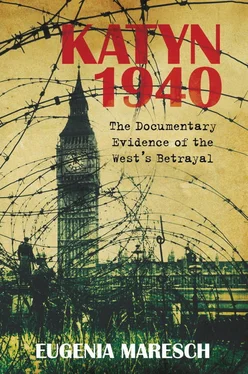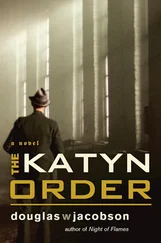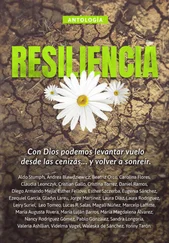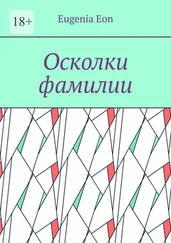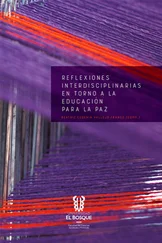On 14 April 1943, my colleague from the Institute of Forensic Medicine at Kraków, Dr Tadeusz [Susz] Pragłowski went to Katyn with the first Red Cross delegation. On his return, in private conversation I asked him his impressions and details of what he had noticed on the spot and who, in his opinion, had perpetrated the crime. Dr Pragłowski said that when he arrived at Katyn, the graves had not yet been completely uncovered and that young spruces three to four years old were growing on them. On the basis of this evidence, it had to be assumed that the graves were more than two years old, which indicated that they were made at the time when the Katyn territory was in Soviet hands. In connection with the possible doubt that the Katyn graves really contained the bodies of the missing Polish officers Dr Pragłowski told me that, among the few bodies uncovered during his stay at Katyn, he found and recognised the body of his University colleague Captain Dr [Zygmunt] Zbroja, which had removed every doubt as to the bodies having been really those of Polish officers.
Departure for Katyn Woods
On the Tuesday after Easter, 27 April 1943, the Director of the Kraków Branch of the PCK , Dr Szebesta [Adam Schebesta], summoned me to him and proposed that I should depart immediately to Katyn in the capacity of forensic medical expert. This proposition took me by surprise and at first I gave no reply, saying that I had to think it over and seek advice. Sharing the general attitude of the Polish people who attached tremendous importance to the classification of the whole Katyn question, and as a result of the insistence of Dr Schebesta and being firmly convinced that other Polish and foreign medico-legal experts would be working at Katyn (at that time everyone in Poland was convinced that the Katyn question would be the subject of an investigation by a neutral committee of experts from the International Red Cross), I decided on the same day to agree to Dr Schebesta’s proposition. Late that evening, I set out by train to Warsaw from where we had to go on. Together with me went a group of laboratory assistants comprising: Ferdynand Płonka, Wacław Buczak and Franciszek Król, medical orderly of the 5th Military Hospital in Kraków.
On leaving Kraków, I took from the Institute of Forensic medicine everything necessary for the work at Katyn, things such as lancets, saws, metal callipers, overalls, rubber boots and gloves, phials for specimens etc. as well as for my personal use a Leica camera, together with the necessary number of films. This equipment made us subsequently independent of the Germans to a certain extent and throughout our work at Katyn we did not have to ask for assistance in this respect. Besides, we received from the Executive Committee of the PCK in Warsaw other equipment such as thick clothes, knives for slitting clothes, disinfectant spirit, rubber boots and gloves. On the other hand, the Polish authorities did not brief us or give indications or instructions as to the line of action we should take on the spot. We knew only that there was already at Katyn a so-called ‘Technical Commission’ of the Polish Red Cross, with which we had to co-operate.
On the 28th of April 1943, we flew direct from Warsaw to Smolensk, together with a delegation of the Executive Committee of the PCK in Warsaw Messrs [Stefan] Cupryjak and [Jan] Mikołajczyk, General Smorawiński’s brother [in-law] and other people unknown to me. Only on my arrival there, did I realize with considerable dismay that I was the only medical expert in the party, as contrary to what Dr Schebesta had assured me, neither the medical expert from Warsaw, who was to have been Dr Manczarski, nor the expert from Lwów, who should have been Dr Popielski, had come with me. Consequently, I was the only Polish doctor there and as a result, too big a responsibility fell on me. After a short stay at Smolensk, the Germans took us direct by car to the place where the PCK Technical Commission were staying at the village of Borok, beyond the Katyn woods. There we met Messrs. Stefan Kassur, Jerzy Wodzinowski, Gracjan Jaworowski, Adam Godzik and Ludwik Rojkiewicz.
The Katyn Woods
On the following day at nine in the morning I found myself at the scene of the crime in the Katyn woods, which was about 3 km distant from our quarters. The terrain of the Katyn woods consisted of a number of small hills among which were marshes covered with marsh grass. Along the top of the hills, woodland paths branched off from the main road through the woods, running from the highway in the direction of the Dnieper River to the so called NKVD bungalow [ dacha ]. The trees in the woods were mixed, being both deciduous and coniferous. The older pine trees, measuring up to 20 metres in height and 25 centimetres in diameter at the foot, were found in the region of the biggest sandy mound. In the wetter parts, the trees were silver birch and alder. To the south of this mound, in the direction of the Dnieper, the trees were of one kind, being spruce less than twenty years old, planted deliberately. In the region of thes biggest mound, which was about 300 metres distant from the highway, were the mass graves of the Polish officers. A big flag of the Red Cross flew above the graves from an especially erected wooden structure. In spite of the fact that it was the end of April, it was chilly in the hollows of the ground and snow was still lying in the Katyn woods.
At the time of my arrival at Katyn a group of 310 Polish officers’ bodies had been exhumed and reburied in the communal grave No.I. Besides this, there were two individual graves, which had been made for the bodies of two Generals, Bohaterewicz and Smorawiński. The graves, which were subsequently numbered I, II, III, and IV, were already completely uncovered so that the upper layer of earth was removed and the top layer of bodies completely exposed. The subsequent graves were numbered V,VI and VII, were at that time already partly opened as the upper layer of earth was being removed. In connection with this I had no possibility, personally, to see how the covering layer of an untouched Katyn grave looked and in particular, I was unable to examine the spruce planted on the graves.
The sight of such a great mass of bodies in Polish uniforms caused everyone a great nervous shock when coming for the first time to the Katyn graves. I myself was not able at the beginning to undertake any actual work, although OLt Slovenzik, who was representing the German authorities at Katyn, told me that I might organize the work of exhumation along my own lines and that I could count on being given every assistance by the German authorities necessary for the conduct of this work. In the afternoon the body of General Smorawiński was dug out once more and examined in the presence of his brother [in-law] Mr Smorawiński identified it by parts of the clothing, teeth etc known to him. The body was not dissected on account of the opposition of the brother.
The Arrival of the International Commission of Experts in Forensic Medicine
On the following day, 30th April 1943, I was still unable to start normal work on account of the arrival on that day, of so called ‘European Commission of Medical Experts’. On its arrival by bus from Smolensk at about 9 am, the Germans ordered the complete cessation of all the work. After a general inspection of the woods and the graves, members of the committee spoke with witnesses who had been brought to Katyn woods from among the local inhabitants. Professor [Ferenc] Orsós in particular spoke with them without the mediation of an interpreter for, as I learned later, he had spent several years in Russian captivity in Siberia during the 1914–18 war and therefore spoke fluent Russian. Professor Buhtz acted as host to the Commission at Katyn and at his suggestion the members of the Commission chose at will individual bodies from different graves, which they subsequently dissected.
Читать дальше
